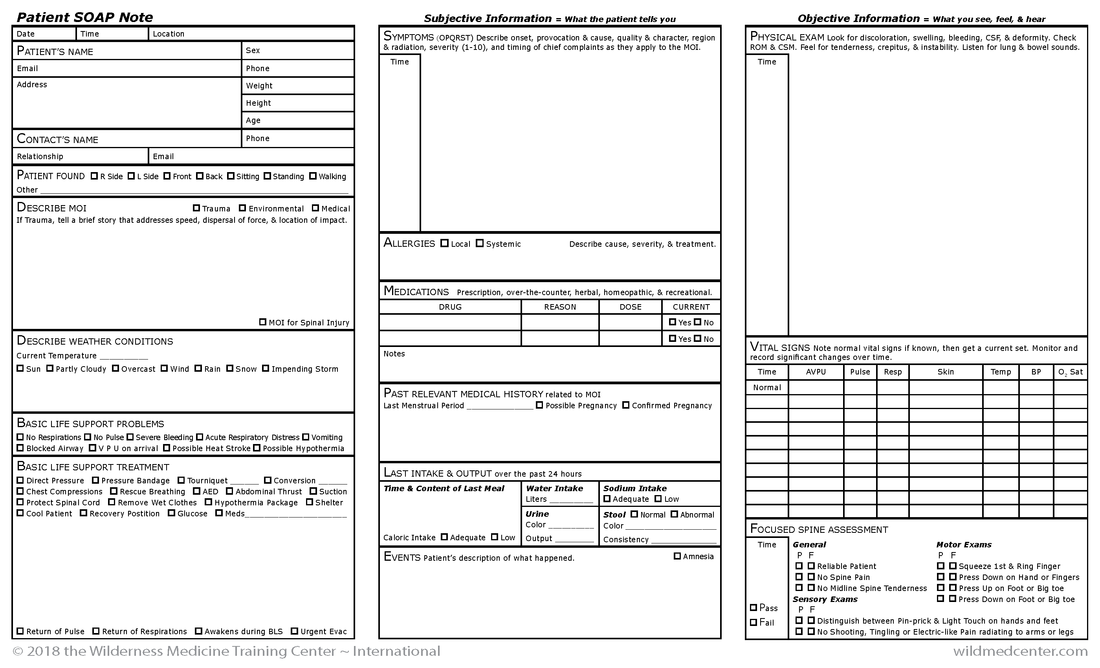

SOAP notes is a method of structuring doctors’ notes for patient medical records. So, what is SOAP notes exactly and how does a standardized approach to physician notes improve care? What is SOAP Notes? Unfortunately, no matter how much we automate the note taking process, use of different terminology and unclear notes that are bound to occur due to simple human error will often cause misunderstandings.įortunately, studies have shown that standardized note formats such as SOAP notes have shown resoundingly positive effects in both patient care and physician burnout rates. Unfortunately, despite the advancements of EHRs and the medical grade computers they’re housed in, note taking has remained the bane of many care providers’ existence.Īccording to healthcare business tech, 25% of surgery and 32% of nursing malpractice cases were caused by a lack of proper communication, the most common culprit of said miscommunication being poor notes and documentation. It was believed that EHRs were to be the solution to this need in the healthcare space. Doing so would not only enhance patient care, it would cut down on physician burnout as well. Geeky Medics accepts no liability for loss of any kind incurred as a result of reliance upon the information provided in this video.It’s been a general understanding for some time that the way doctor’s take notes needs to be improved. DO NOT perform any examination or procedure on patients based purely on the content of these videos. Join the Geeky Medics community: 👩👩👧👧Īlways adhere to medical school/local hospital guidelines when performing examinations or clinical procedures. Subscribe to our newsletter to be the first to know about our latest content: ✉️ You can access a range of psychiatry OSCE stations here: Ĭheck out our other awesome clinical skills resources including:
Soap notes how to#
This video demonstrates how to perform a mental state examination (MSE) on a patient exhibiting features of anxiety in the context of a psychiatry OSCE station.Īccess our step-by-step MSE written guide alongside the video here: Frequency of observations and monitoring of fluid balance.medications, intravenous fluids, oxygen, nutrition) Items you to include in your plan may include: The final section is the plan, which is where you document how you are going to address or further investigate any issues raised during the review. “Impression: resolving community-acquired pneumonia”.“CRP decreasing (20), white cell count decreasing (11)”.“Oxygen saturations 98% on air, respiratory rate 15”.“Reduced shortness of breath and improved cough”.“On day 3 of treatment for community-acquired pneumonia”.If the diagnosis is already known and the findings of your assessment remain in keeping with that diagnosis, you can comment on whether the patient is clinically improving or deteriorating: “Impression: community-acquired pneumonia”.“Chest X-ray revealed increased opacity in the right lower zone, consistent with consolidation”ĭocument your impression of the diagnosis (or differential diagnosis):.“Raised white cell count (15) and CRP (80)”.“Tachypnea (respiratory rate 22) and hypoxia (SpO 2 87% on air)”.The assessment section is where you document your thoughts on the salient issues and the diagnosis (or differential diagnosis), which will be based on the information collected in the previous two sections. Some examples of investigation results include: “There were no cranial nerve deficits noted.”.“Widespread expiratory wheeze on auscultation of the chest.”.Some examples of clinical examination findings may include: Temperature (including any recent fevers)Īn assessment of the patient’s fluid intake and output including:.



 0 kommentar(er)
0 kommentar(er)
